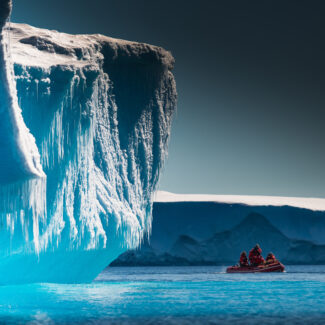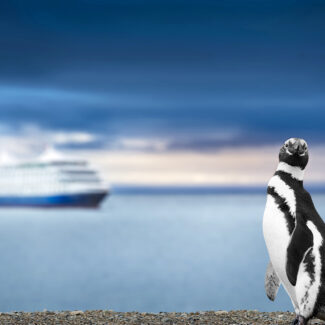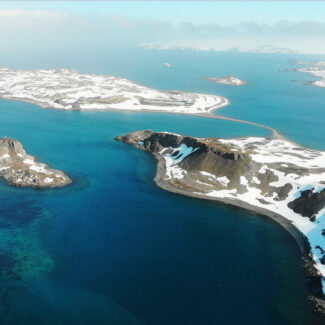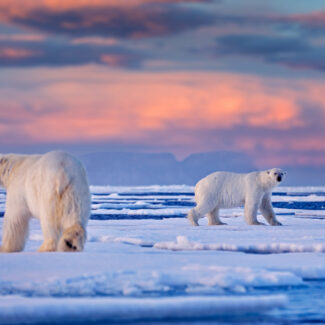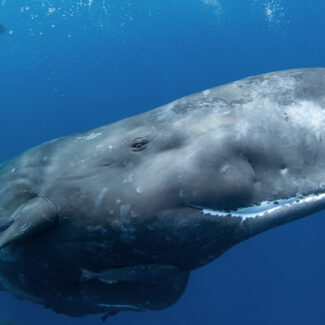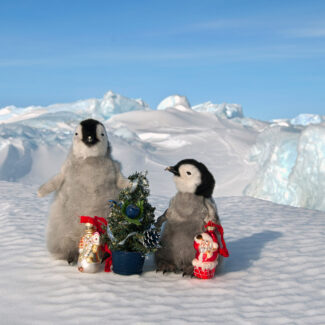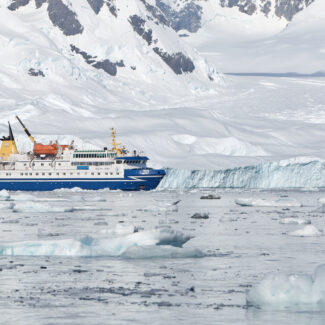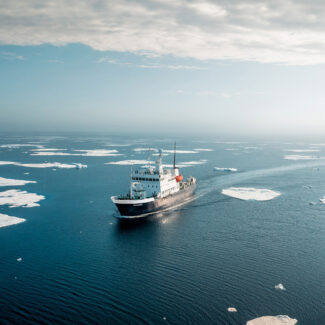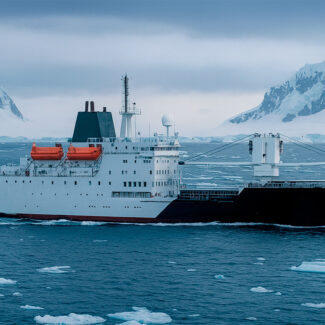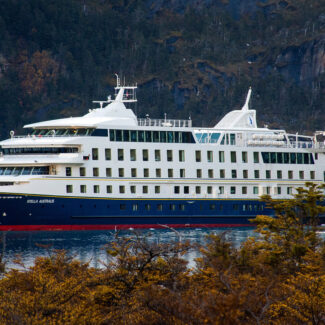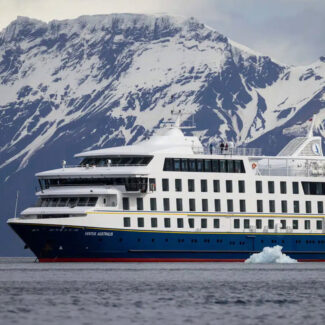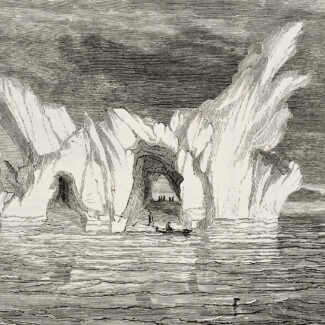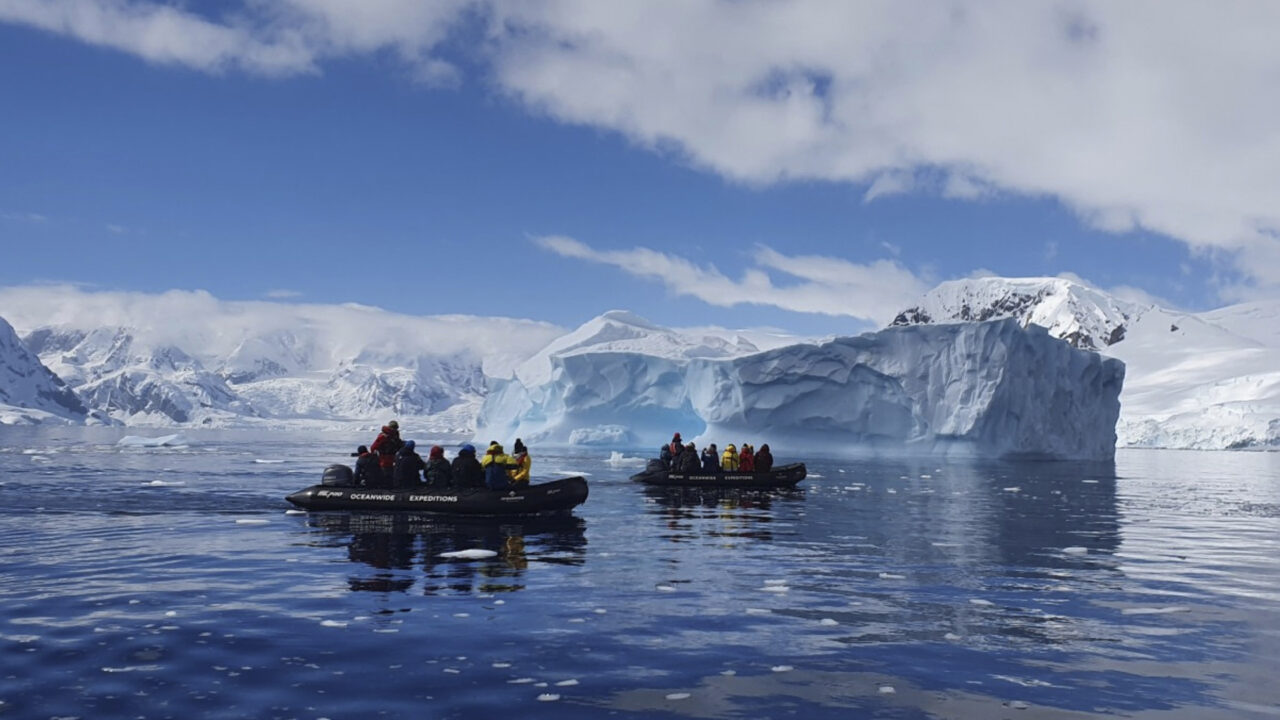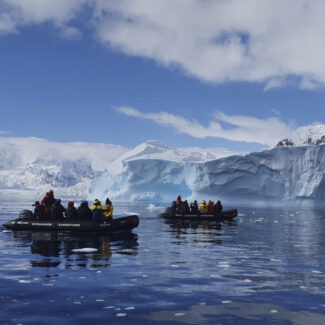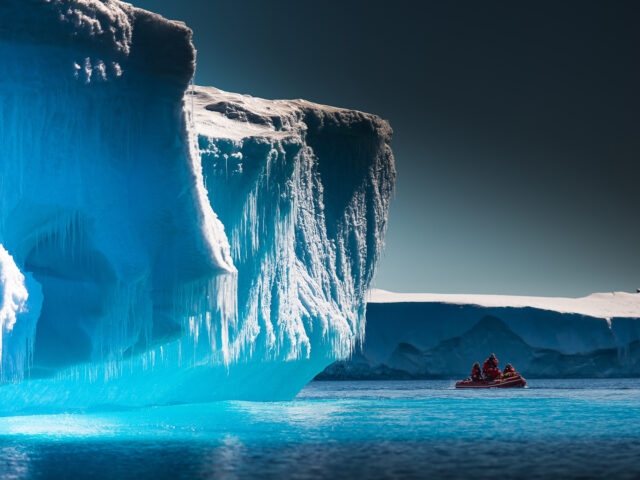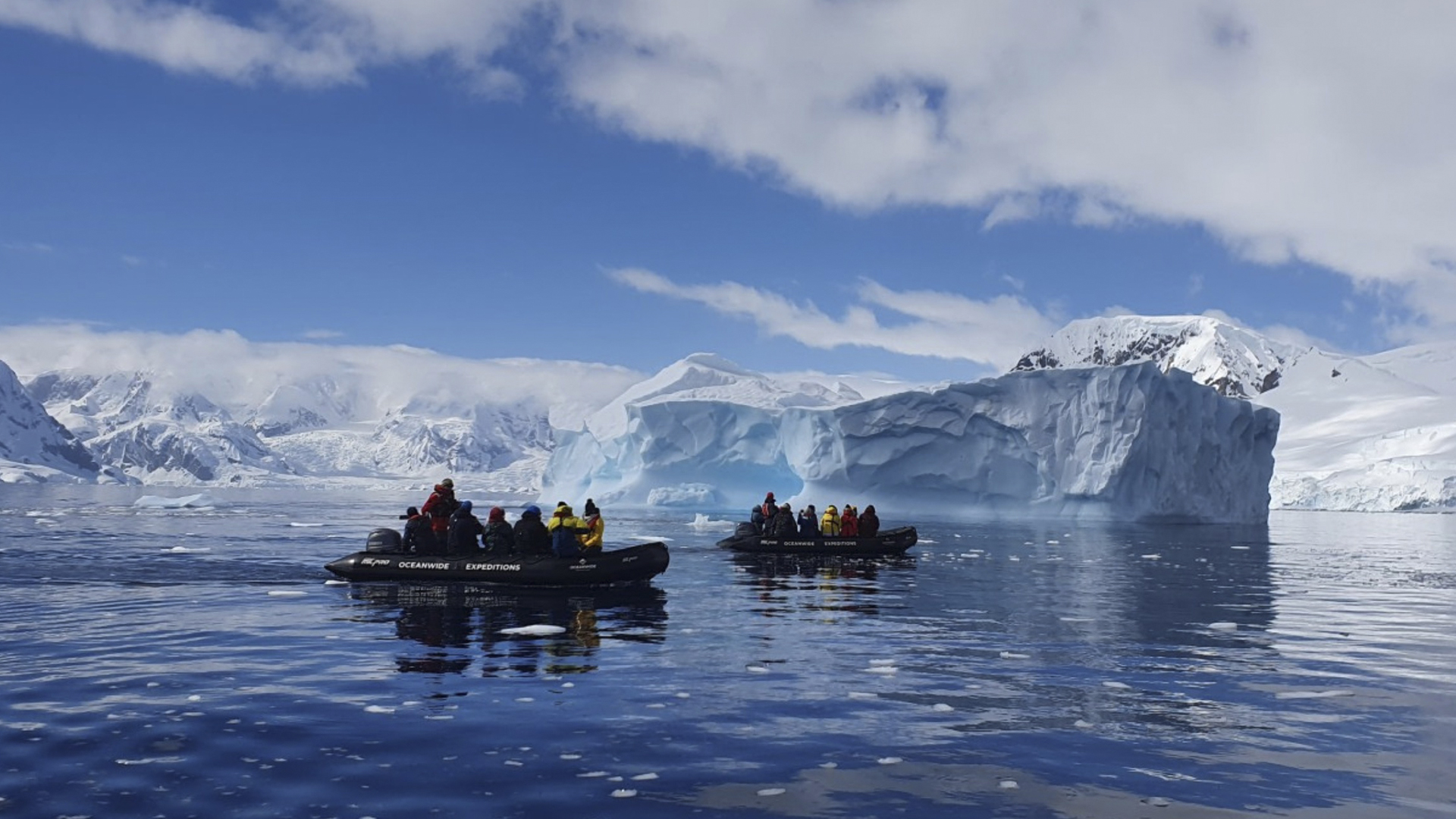
Atlantic Odyssey, excl. Antarctic Peninsula
Highlights
- Witness king penguins, elephant seals, and playful fur pups at South Georgia's iconic rookeries, including Salisbury Plain.
- Explore remote islands like Tristan da Cunha and Gough, home to rockhopper penguins, albatrosses, and rare seabirds.
- Discover Saint Helena's history, endemic wildlife, and subtropical waters with optional snorkeling and local cultural excursions.
Embark on the 24-day Atlantic Odyssey for an unparalleled expedition through some of the Southern Ocean’s most remote and wildlife-rich islands. Departing from Ushuaia, Argentina, you traverse the mighty Antarctic Convergence, where cold Antarctic waters meet warmer sub-Antarctic currents, heralding a spectacular diversity of seabirds and marine life.
Your voyage takes you to South Georgia, where towering king penguin rookeries, elephant seals, and playful fur seal pups abound, alongside the historical remnants of Grytviken and Shackleton’s grave. From there, navigate to Gough Island and the isolated archipelago of Tristan da Cunha, home to rare seabirds, albatrosses, and the thrill of exploring islands few have ever set foot upon.
The journey concludes in subtropical waters, with Saint Helena offering cultural richness, historic landmarks like Longwood House, and opportunities to snorkel among vibrant tropical fish. Onboard, expert-led lectures, Zodiac excursions, and scenic sailing through the westerlies immerse you in this extraordinary region.
This expedition promises a profound sense of adventure, awe, and achievement, allowing travelers to venture into rarely visited lands, witness iconic wildlife behaviors, and engage with maritime history. Ideal for passionate wildlife enthusiasts, intrepid explorers, and those seeking a blend of remote wilderness and cultural discovery, the Atlantic Odyssey delivers memories that will last a lifetime.
Standard Activities
About the Atlantic Odyssey, excl. Antarctic Peninsula
Embark on the 24-day Atlantic Odyssey for an unparalleled expedition through some of the Southern Ocean’s most remote and wildlife-rich islands. Departing from Ushuaia, Argentina, you traverse the mighty Antarctic Convergence, where cold Antarctic waters meet warmer sub-Antarctic currents, heralding a spectacular diversity of seabirds and marine life.
Your voyage takes you to South Georgia, where towering king penguin rookeries, elephant seals, and playful fur seal pups abound, alongside the historical remnants of Grytviken and Shackleton’s grave. From there, navigate to Gough Island and the isolated archipelago of Tristan da Cunha, home to rare seabirds, albatrosses, and the thrill of exploring islands few have ever set foot upon.
The journey concludes in subtropical waters, with Saint Helena offering cultural richness, historic landmarks like Longwood House, and opportunities to snorkel among vibrant tropical fish. Onboard, expert-led lectures, Zodiac excursions, and scenic sailing through the westerlies immerse you in this extraordinary region.
This expedition promises a profound sense of adventure, awe, and achievement, allowing travelers to venture into rarely visited lands, witness iconic wildlife behaviors, and engage with maritime history. Ideal for passionate wildlife enthusiasts, intrepid explorers, and those seeking a blend of remote wilderness and cultural discovery, the Atlantic Odyssey delivers memories that will last a lifetime.
Itinerary
End of the world, start of a journey
Your voyage begins where the world drops off: Ushuaia, Argentina, said to be the southernmost city on the planet, located on the far southern tip of South America. Starting in the afternoon, we embark from this small resort town on Tierra del Fuego (nicknamed “The End of the World”) and sail the mountainous Beagle Channel for the rest of the evening.
Sea route to South Georgia
South Georgia sights
Once more to the Sea
The quest continues at the great Gough Island
Tristan da Cunha and all the pretty birds
Subtropical seas and seabirds
St. Highlights of Saint Helena
One of the best things about a polar voyage is that you’re never done exploring. Even if you think you have walked every shore, climbed every mountain, and spotted every penguin (or polar bear), there is still a whole other world to explore on the water.
Polar kayaking is a great way to tour the blue-and-white beauty of the polar seas up close, visiting stunning ice formations and waterways too small for our ships to enter.
Do I need to be an experienced kayaker?
The amount of experience we require depends on the cruise you choose. If you have no experience at all, we suggest one of our Basecamp voyages, where we will happily introduce even the most inexperienced kayakers to this wonderful outdoor sport.
The toughest part of kayaking in gentle waters is usually getting into the kayak itself. After that, you just have to keep a steady rhythm with your paddles.
Some of our cruises require that you have more kayaking experience because they involve longer kayak excursions. These excursions expose you to water that might not be as gentle as a sheltered bay, and you stand more of a chance of encountering rougher weather conditions.
You will not need to be able to do a kayak roll, but you should be able to demonstrate that you’re comfortable in a sea kayak. On these non-Basecamp excursions, our guides reserve the right to refuse you access to a kayak if it is clear you don’t have the necessary experience. This is for your safety as well as theirs.
How physically fit do I need to be?
You will want to be in decent physical shape and possess a good sense of balance. Kayaking can be demanding on your core and arm muscles.
Is polar kayaking safe?
All of our kayaking outings are led by certified and experienced guides, but you must always take caution when kayaking in the polar regions.
We will provide you with suitable outer clothing for kayaking. Kayak excursions are limited to 14 passengers per kayak guide. This number lets our guides keep track of everyone and make sure our guests are having a good time.
One guide stays with the group in a support kayak, while a safety boat follows in case of emergencies. All guides will try to scale excursions to the skill level of the group.
Do I have to bring my own kayaking equipment?
We will provide the following items:
- Seven double-seat sea kayaks on Plancius & Ortelius
- 14 double-seat sea kayaks on Hondius & Janssonius
- Paddles with anti-drip rings
- Basic (4 mm neoprene) wetsuits in different sizes
- Kayak spray cover
- Waterproof lightweight jacket (cagoule)
- Life jacket / kayak vest
- Neoprene boots
Please bring the following gear:
- thermal underwear, bottom and top (for under the wetsuit)
- fleece jacket or vest to wear over your thermal underwear
- gloves (insulated ski or snowboard gloves with grip or neoprene watersport gloves)
- waterproof bag (if you are bringing a camera or binoculars)
- fleece hat
- turtleneck or neck gaiter
- thick socks
- sunglasses
- sunblock
Avoid bringing cloth clothing like T-shirts or jeans. Once it gets wet (from water or sweat), it will stay wet for a long time – not a comfortable experience in polar weather!
What will I see while kayaking?
You’ll see rugged shorelines sloping up into snow-capped mountains, pristine beaches, and icebergs that turn the water beneath you a brilliant blue. You may also see some local wildlife, which the peaceful nature of kayaking makes even better.
For those craving a truly immersive polar adventure, our open-air camping activity gives you the chance to experience the Antarctic wilderness as few travelers have.
We provide the necessary camping gear, including breathable bivouac bags that are wind and waterproof and a lightweight alternative to tents. And our polar sleeping bags will keep you warm, dry, and comfortable during the enchanting Antarctic night.
All campers will be assisted and supervised by experienced expedition guides.
General information on our camping activity
Camping is available based on weather, site conditions, and environmental regulations.
Everyone can participate, no previous experience required.
The maximum number of participants is limited to 30 per night.
All camping activities are supervised by expert field guides.
Basic equipment is provided by OEX (bivouac bags, mats, boots).
One camp night must be booked prior to your trip, but extra nights may be arranged on board (no waitlist). Please contact us for details.
Details of the Antarctic camping experience
We aim for at least one night of camping on each designated trip, but the expedition team will offer more if possible. Additional nights are determined by weather and local conditions and can only be offered when it is a possible for the vessel to stay close to shore. If the vessel has to relocate during the night, camping is not possible.
According to Antarctic Treaty and IAATO regulations, we are not allowed to take stoves, fuel, or food on shore with the exception of emergency rations, survival gear, water, and medical supplies.
The camping group will be taken to shore after dinner, and then returned to the ship before breakfast. Our camps will always be made in a place where wildlife will not be disturbed.
All campers will be equipped with a personal waterproof bag containing a sleeping mattress, synthetic sleeping bag with inner liner, and a breathable bivouac bag. Besides these personal items, other gear will also be taken to shore.
While campers are on shore, our staff will be in full radio contact with the ship at all times. Guides will also stay on shore to assist and supervise the campers. Upon departure, the campsite must be cleaned and everything returned to the ship.
Clothes to bring for camping
Please pack for the worst weather, as conditions in Antarctica can change rapidly. Below is a list of important items you must bring yourself:
- Thermal underwear, fleece vest or jacket, and down jacket that is breathable (e.g., Gore-Tex)
- Warm hat and turtleneck or neck gaiter
- Thermal under-gloves, fleece finger gloves, or warm mittens
- Thick socks with spares
- Good UV-protectant sunglasses
- Sun cream or sunblock
- Flashlight or lightweight headlamp for departures in February – March
Gear we provide for camping
- Insulated waterproof rubber boots
- Bivouac bag (one per person) and mattress
- Waterproof sleeping bag with cotton inner liner
- Portable field toilet (one per group)
Special note: Cotton clothing, such as normal T-shirts and jeans, are not advisable. Cotton tends to get wet and stay wet while moving in a cold environment. We recommend thermal underwear.
Weather conditions
Exploring remote and wild regions like Antarctica requires a sensible and flexible approach. Although there can be clear skies with bright sunshine, the weather is unpredictable. Katabatic winds caused by the icecaps and glaciers can pick up suddenly and are a fierce opponent for polar travelers. Such conditions might also lead to the cancelation of planned camp nights. If local circumstances prevent us from camping on shore, we may attempt to camp on the open decks of the ship.
In order for the camping activity to take place, we must have at least 10 passengers who intend to camp. Only 30 passengers can camp at any one time, and we always assign one expedition guide per every 20 campers to assist and supervise operations.
Lastly, we do not use tents as part of our camping equipment. Tents are greatly affected by wind in Antarctica, and using them greatly reduces the weather in which we can camp.
Instead, we have found that bivouac sleeping bags offer us the best odds of being able to follow through with our camping activity. They also provide an unparalleled experience by allowing you to see and hear all that is happening around you, from the noise of penguin calls to the sound of whale blows. They also offer the best view of the beautiful Antarctic skies.
Camping FAQ
Is it possible to take food?
Eating food and snacks on shore is not allowed, per the Antarctic Treaty and IAATO regulations, in order to prevent the spread of outside plants or contaminants.
Can I go to the toilet?
Toilet visits should be avoided on land, per the Antarctic Treaty and IAATO regulations. Campers are encouraged to instead use toilet facilities on board prior to camping. A portable toilet will be available on shore, however, and all solid waste must be returned to the ship. It is advisable that campers bring a “pee bottle” (e.g., wide-opening Nalgene bottle) for their comfort.
Where and how long do we stay on shore?
We offer near-shore camping on the continent and / or nearby islands depending on the itinerary, weather, and regulations. Camping groups stay a maximum of 10 hours on shore.
What if local weather and ice conditions are unsafe for camping?
The expedition leader will do their best to ensure the camping activity takes place. But if local circumstances prevent us from camping on shore, we may attempt to camp on the open decks of the ship.
Is prior experience required?
Everyone can participate in this activity without previous experience. There are no physical requirements except helping the guides put up and clean the campsite. Please note, however, that we are not camping in a campground: There can be rocks, snow, mud, and frozen surfaces. We expect our campers to help prepare the campsite and break camp the next morning. All equipment must be cleaned thoroughly after use. The weather can sometimes make these tasks difficult.
What are the weather conditions?
Around the coasts of Antarctica, temperatures are generally close to freezing in the summer (December – February) or slightly above freezing in the northern part of the Antarctic Peninsula. The temperatures in Antarctica vary between about -5 to 8°C (23 to 46°F). In strong wind, these temperatures can feel sub-zero. Warm clothing, a flexible attitude, and a sense of adventure are the best ways to overcome these sometimes-harsh conditions.
What's Included
-
Voyage aboard the indicated vessel as indicated in the itinerary
-
All meals throughout the voyage aboard the ship including snacks, coffee and tea.
-
All shore excursions and activities throughout the voyage by Zodiac.
-
Program of lectures by noted naturalists and leadership by experienced expedition staff.
-
Free use of rubber boots and snowshoes.
-
Luggage transfer from pick-up point to the vessel on the day of embarkation, in Ushuaia.
-
All miscellaneous service taxes and port charges throughout the programme.
-
Comprehensive pre-departure material.
What's Excluded
-
Mandatory travel insurance
-
Any airfare, whether on scheduled or charter flights
-
Pre- and post- land arrangements.
-
Passport and visa expenses.
-
Government arrival and departure taxes.
-
Meals ashore.
-
Baggage, cancellation and personal insurance (which is strongly recommended).
-
Excess baggage charges and all items of a personal nature such as laundry, bar, beverage charges and telecommunication charges.
-
The customary gratuity at the end of the voyages for stewards and other service personnel aboard (guidelines will be provided).


